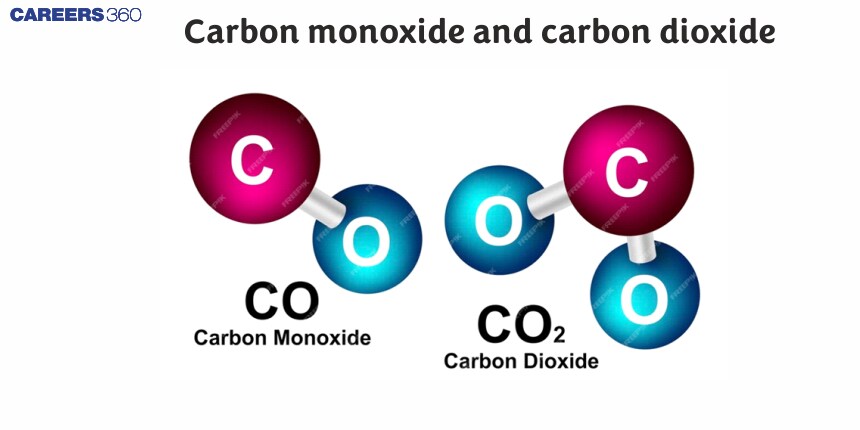Carbon monoxide and carbon dioxide
Two main contributors to air pollution are carbon monoxide, CO, and carbon dioxide, CO₂, both compounds of carbon. These gases are ubiquitous in urban environments and hold huge, potential impacts on global warming, climate change, and human health.
Carbon Monoxide and Carbon Dioxide
Carbon monoxide is an odorless and colorless gas that results from incomplete combustion of all carbon-based materials. It is highly poisonous because it binds with blood hemoglobin in the circulatory system and thus blocks the transport of oxygen. Low levels of CO may come with headaches, dizziness, and fatigue; higher concentrations are lethal.
- Carbon Monoxide and Carbon Dioxide
- Some Solved Examples
- Summary

The second is carbon dioxide, a colorless gas with a faint, sharp odor and a somewhat acidic taste. This gas is emitted in the combustion of every carbon-containing substance and is an end product of respiration in animals and plants, or during fermentation. Not toxic at normal atmospheric levels, high CO₂ concentrations can cause breathing difficulties, while more importantly, it acts like one of the greenhouse gases that brings about global warming.
Direct oxidation of C in a limited supply of oxygen or air yields carbon monoxide.
On a small scale, pure CO is prepared by dehydration of formic acid with concentrated H2SO4 at 373 K.
On a commercial scale, it is prepared by the passage of steam over hot coke. The mixture of CO and H2 thus produced is known as water gas or synthesis gas.
When air is used instead of steam, a mixture of CO and N2 is produced, which is called producer gas.
Water-gas and producer gas are very important industrial fuels. Carbon monoxide in water gas or producer gas can undergo further combustion forming carbon dioxide with the liberation of heat. Carbon monoxide is a colorless, odorless, and almost water-insoluble gas. It is
a powerful reducing agent and reduces almost all metal oxides other than those of alkali and alkaline earth metals, aluminum, and a few transition metals. This property of CO is used in the extraction of many metals from their oxide ores.
In CO molecule, there are one sigma and two π bonds between carbon and oxygen, :C ≡ O:. Because of the presence of a lone pair on carbon, CO molecule acts as a donor and reacts with certain metals when heated to form metal carbonyls. The highly poisonous nature of CO arises because of its ability to form a complex with hemoglobin, which is about 300 times more stable than the oxygen-hemoglobin complex. This prevents hemoglobin in the red blood corpuscles from carrying oxygen around the body and ultimately results in death.
Diversity of Elements of Carbon Monoxide and Carbon Dioxide
In several processes, CO and CO₂ belong to different areas with their peculiar properties and functions. Carbon monoxide has a strong connection it has with air pollution and health effects. There exist a variety of sources that generate carbon monoxide together with emissions from motor vehicles, industrial processes, and residential heating systems. This creates a need for monitoring and control of CO, hence becoming important parameters in securing public health and safety.
It is prepared by the complete combustion of carbon and carbon-containing fuels in excess of air.
In the laboratory, it is conveniently prepared by the action of dilute HCl on calcium carbonate.
On a commercial scale, it is obtained by heating limestone.
It is a colorless and odorless gas. Its low solubility in water makes it of immense biochemical and geo-chemical importance. With water, it forms carbonic acid, H2CO3 which is a weak dibasic acid and dissociates in two steps:
H2CO3/HCO3– buffer system helps to maintain the pH of blood between 7.26 to 7.42. Being acidic in nature, it combines with alkalies to form metal carbonates.
Carbon dioxide, which is normally present to the extent of ~ 0.03 % by volume in the atmosphere, is removed from it by the process known as photosynthesis. It is the process by which green plants convert atmospheric CO2 into carbohydrates such as glucose. By this process, plants make food for themselves as well as for animals and human beings.
Recommended topic video on (carbon monoxide and carbondioxide)
Some Solved Examples
Example 1: Water gas is:
1)Water vapour
2)CO + H2O
3) (correct)CO + H2
4)CO + N2
Solution
As we learn
Water gas is a mixture of CO and H2. It is produced when steam is passed over hot coke
Example 2 : When air is passed over hot coke it produces:
1)Water gas
2) (correct)Producer gas
3) Syngas
4)Coal gas
Solution
As we learn
Producer Gas is a mixture of CO and N2 . It is produced when air is passed over hot coke
Hence, the answer is the option (2).
Example 3: Which of the following is correct?
1)
2)
3)
4)None of these Solution
As we have learned,
CO is used as a reducing agent in the extraction of metals from their oxides. It is able to reduce elements that have a medium to low reactivity. e.g., Zn, Fe, Sn, etc
It is not able to reduce metals with greater reactivity, such as K, Na, Mg, Al, etc.
Hence, the answer is the option (2).
Summary
Carbon monoxide and carbon dioxide are two very important compounds of carbon. CO is a poisonous by-product that might lead to serious health hazards if proper combustion does not take place. Monitoring and control of the contents should be done making CO₂ one of the potent greenhouse gases that is central in the issue of climate change, in which the world enforces more control on its emission.
Also Read
19 Feb'25 06:55 PM
19 Feb'25 06:49 PM
19 Feb'25 06:45 PM
19 Feb'25 06:41 PM
19 Feb'25 05:03 PM
17 Oct'24 12:24 PM
11 Oct'24 10:25 AM
11 Oct'24 12:09 AM
05 Oct'24 12:20 AM

